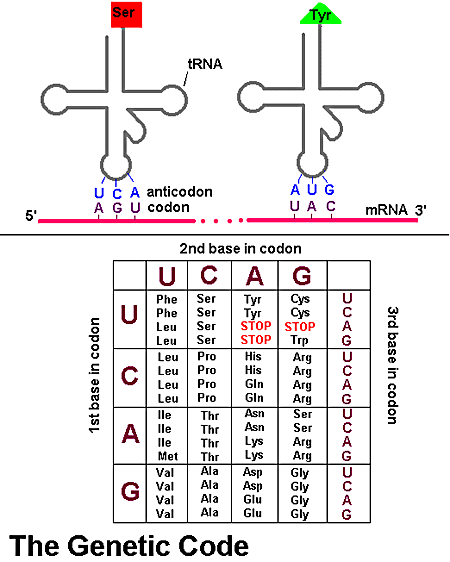THE GENETIC CODE

Legend:
Amino acids specified by each codon sequence on mRNA. Key for the above table:
Ala: Alanine |
Cys: Cysteine |
Asp: Aspartic acid |
Glu: Glutamic acid |
Phe: Phenylalanine |
Gly: Glycine |
His: Histidine |
Ile: Isoleucine |
Lys: Lysine |
Leu: Leucine |
Met: Methionine |
Asn: Asparagine |
Pro: Proline |
Gln: Glutamine |
Arg: Arginine |
Ser: Serine |
Thr: Threonine |
Val: Valine |
Trp: Tryptophane |
Tyr: Tyrosisne |
A = adenine G = guanine C = cytosine T = thymine U = uracil
DNA transfers information to mRNA in the form of a code defined by a sequence of nucleotides bases. During protein synthesis, ribosomes move along the mRNA molecule and "read" its sequence three nucleotides at a time (codon) from the 5' end to the 3' end. Each amino acid is specified by the mRNA's codon, and then pairs with a sequence of three complementary nucleotides carried by a particular tRNA (anticodon).
Since RNA is constructed from four types of nucleotides, there are 64 possible triplet sequences or codons (4x4x4). Three of these possible codons specify the termination of the polypeptide chain. They are called "stop codons". That leaves 61 codons to specify only 20 different amino acids. Therefore, most of the amino acids are represented by more than one codon. The genetic code is said to be degenerate.
Source: Access Excellence